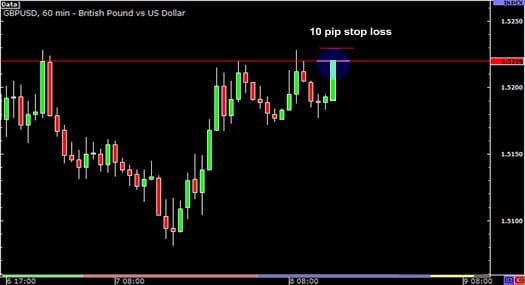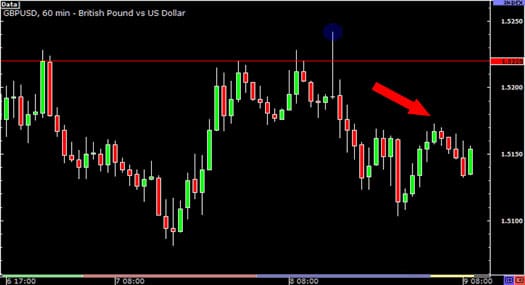It’s a simple fact of life that the forex market is inherently unpredictable. No matter how much you research your trades, it’s inevitable that, from time to time, the market will confound your expectations, and you will lose out on a trade.
There’s nothing you can do to avoid this completely – but you do have some measure of control over what you do when you are caught in that situation. You can cut your losses quickly, or you can hang on in the hope that the market moves back in your favour. The first option guarantees a loss – albeit one of limited size – whereas the second option gives you a chance of profit, but also a high risk that you will lose a huge amount of money.
Needless to say, the first option is the one to go for in almost all instances. It’s inevitable that you will have a few losing trades, and this will probably be a common occurrence if you are new to forex trading. The key is to survive these losses, rather than having them wipe out your whole account – and this is where stop losses come in.
A stop loss is a predetermined point at which you will automatically exit a losing trade, cutting your losses so that you can live to trade another day, and reducing the anxiety associated with an open trade.
The stop loss point represents a price level that invalidates your trading idea. Basically, if the price hits this level, then it proves that the idea behind the trade was wrong, and that there is no point in pursuing it further.
In this series, we’re going to be looking at four methods for setting stop losses, namely Equity stop, Volatility stop, Chart stop, and Time Stop. Today, we’ll be looking at the simplest method, the Equity stop.
Equity Stop
The Equity Stop is also known as the percentage stop, because it is based on the percentage of the trader’s account that the trader is willing to lose on the trade – for example 2%.
The size of these stops depends very much on the aggressiveness of your trading strategy. An aggressive trader might be willing to risk as much as 10% of their account on a single trade, whereas a more conservative trader might risk 2% or less on each trade. It all depends on how quickly you want to make money, and more importantly how quickly you are prepared to lose it in search of greater profits.
After the percentage risk has been decided upon, the trader uses his position size to work out how far the stop should be placed away from the entry point of the trade.
As a general rule, the stop should always be set based on the market environment or the rules of your trading system, rather than just being a raw expression of how much you are prepared to lose.
For example, let’s say you have an account with $500, and the minimum lot size for that account is 10,000 units. Having set out a risk management strategy, you have decided that you will risk no more than 2% of your account on each trade.
Seeing that the resistance level of 1.5620 has been holding, you decide to place a trade on GBP/USD. With 10k units of GBP/USD, each pip is worth $1 and 2% of your account is $10. This means that the biggest stop you can put on is 10 pips, so you put your stop at 1.5630.
The problem with this is that GBP/USD usually moves more than 100 pips every day. This means that you could get stopped out by the slightest move in the wrong direction. Because of the position limits of your account, the stop is based purely on how much you want to lose – rather than the market conditions of GBP/USD. Let’s see what happens next…
As you can see, the price moved just slightly above the stop, triggering the stop loss, before moving down over 100 pips. So not only did you lose money on the trade, but you also missed the chance of a 100 pip gain.
This is why equity stops, which force you to set your stop at an arbitrary price level, aren’t always the best ones to use. This technique often results in the stop being placed to close to the entry, as in the example above, or at a level that doesn’t take technical analysis into account.
However, in the above example, the main problem was not the equity stop technique itself, but the conditions of the trading account. Given the small amount of starting capital, you should have selected a broker that allowed you to trade much smaller lots, such as micro lots (1,000 units). With micro lots, 1k of GBP/USD would be worth $0.10 – allowing you to set a 100 pip stop loss rather than a 10 pip one while staying within your 2% risk comfort level. This gives you the flexibility to set your stop to suit the market environment, the trading system, and your own technical analysis.
In the next installment, we shall be looking at some other methods for setting stop losses that offer an alternative to the simple Equity Stop.
Tradersdna is a leading digital and social media platform for traders and investors. Tradersdna offers premiere resources for trading and investing education, digital resources for personal finance, market analysis and free trading guides. More about TradersDNA Features: What Does It Take to Become an Aggressive Trader? | Everything You Need to Know About White Label Trading Software | Advantages of Automated Forex Trading











































